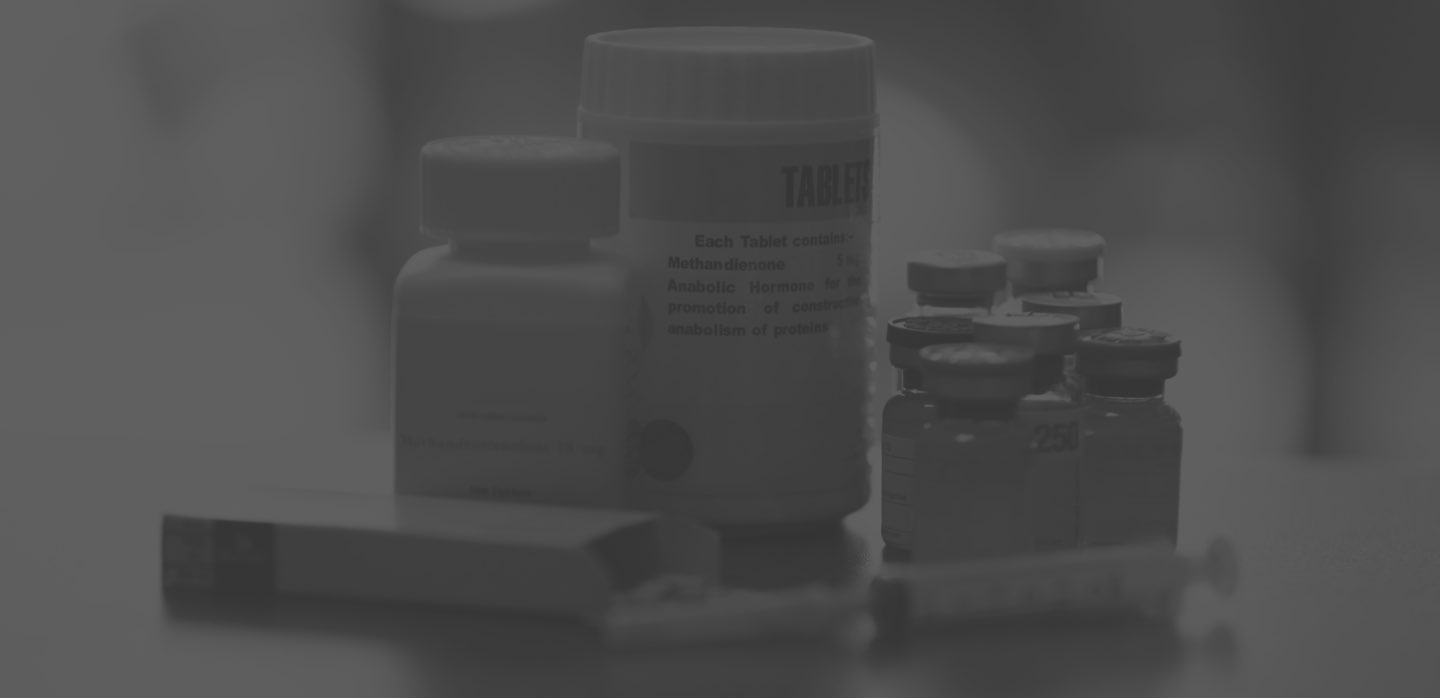Drug users are not only at risk of short-term harm, but also possible long-term health consequences that can be completely life changing. Drug abuse weakens the body’s immune system and makes users more likely to engage in risky behavior, either to attain drugs or while under the influence of them.
Diseases linked to substance abuse are frequently serious and can have fatal consequences.
- AIDS/HIV
- Hepatitis B
- Hepatitis C
- STDs
- Tuberculosis
Drug users contract these diseases or other infections through unsafe substance abuse practices. They are often desperate and succumb to drug cravings to satisfy uncomfortable withdrawals. The grips of addiction can be so tight that they cannot control their ability to abstain from drug abuse even if they desire to. Sadly, even if these individuals receive treatment, it is often too late to prevent them from contracting a disease.
Risky Drug Abuse Behavior
Substance abuse is linked to risky behaviors with a high potential for disease contraction.
- Sharing needles
- Sharing needles fosters possible exposure to infected blood or body fluids and is one of the most common ways individuals develop diseases such as HIV or Hepatitis.
- Reusing drug paraphernalia
- Recycling drug paraphernalia increases the risk of disease among drug users. Reusing contaminated water in drug solutions, bottle caps or spoons used to melt substances, or small pieces of cotton or cigarette ends to filter particles out of drugs are all examples of drug-paraphernalia recycling that can result in disease contraction.
- Sexual behavior
- Drug abuse is associated with sexual risk behaviors that are often linked to illnesses or infections. Those under the influence of drugs may experience an increased sex drive and are more likely to engage in high-risk sexual behaviors, such as unprotected sex or sex with multiple partners. Some drug users may be so desperate to satisfy their addiction that they resort to selling sex to pay for drugs, exposing themselves to greater risks of contracting a sexually transmitted disease.
Injection Drug Abuse
Injection drug users (IDUs) have one of the highest risks of acquiring an infectious disease. The most common diseases attributed to injection drug use include Hepatitis B and C and HIV/AIDS.
Hepatitis B & C
Injection drug users have the highest rate of contracting Hepatitis C out of any risk-group. Statistically, every IDU infected with Hepatitis C will infect another 20 people. Injection drug use remains one of the biggest factors in the increasing cases of Hepatitis C.
IDUs also have high rates of Hepatitis B. In 2010, IDUs had a Hepatitis B infection rate of 20 percent. This statistic is particularly disheartening as there is a vaccine that can prevent Hepatitis B.
- 40 percent of IDUs contract Hepatitis C within two years of their first injection.
- 50 – 80 percent of IDUs contract Hepatitis C within five years of their first injection.
- 53 percent of the 17,000 new cases of Hepatitis C in 2010 were among IDUs.
HIV/AIDS
Each year, approximately 10 percent of new HIV diagnoses are the result of injection drug use. Of the new HIV cases caused by injection drug use in 2010, about 62 percent were men and 38 percent were women. Since the beginning of the HIV/AIDS epidemic, injection drug use has been responsible for one-third of adult and adolescent AIDS cases in the country. Through 2012, 28 percent of those who died from AIDS since the beginning of the HIV/AIDS epidemic could be attributed to injection drug use. Additionally, another eight percent of those who died from AIDS since the initial outbreak can be attributed to male-to-male sexual contact with an IDU.
Non-Injection Drug Users
Non-injection drug users also face increased risks of contracting HIV, Hepatitis B and C, and other infectious diseases. While non-injection drug users may not face the added risks of blood or bodily fluid exchange as a result of needle sharing or injection practices, they are still just as likely as IDUs to engage in high-risk sexual and other behaviors with a high potential for disease exposure. According to the National Institute on Drug Abuse, some studies show that non-injection drug users contract HIV at similar rates to IDUs, showing the prevalence of sexual transmission of HIV among drug users. Non-injection drug users also face increased risk of tuberculosis and have two to six times the chance of contracting the disease as non-drug users. Furthermore, non-injection drug users are twice as likely to develop tuberculosis as IDUs.
Substances with High Disease Risks
Certain drugs are linked to higher rates of disease among drug users than others. Diseases caused by drug abuse could be a direct result of an individual’s drug use or a result of behavior that occurs under the influence of substances.
Heroin

Heroin, one of the most commonly injected drugs of abuse, increases the risks of HIV, viral hepatitis and sexually transmitted diseases. Users often reuse and share needles and other drug paraphernalia to get high, exposing other users to blood or body fluids that could be infected. Heroin users are also more likely to engage in unprotected sex and sex with multiple partners, increasing their risk of contracting a sexually transmitted disease.
Cocaine
Although the majority of cocaine users do not share the same risks as injection drug users, they do face an increased risk of acquiring an infectious disease. Cocaine users are more likely to engage in risky sexual behaviors, such as unprotected sex, and therefore have higher odds of STDs. According to the National Institute on Drug Abuse, inner-city youth who smoke crack cocaine have three times the risks of HIV as those who do not.
Steroids

Other popular injectable drugs are anabolic steroids. Steroid users share the same disease risks as other IDUs. Additionally, steroid abuse can lead to endocarditis, a dangerous inflammation of the inner lining of the heart, and a number of different viral infections at injection sites.
Methamphetamine
Injection and non-injection methamphetamine users each face higher risks of contracting and transmitting Hepatitis B and C, HIV and other viral infections. Methamphetamine abuse is also closely associated with high-risk sexual behavior and can increase an individual’s libido, making them more susceptible to sexually transmitted diseases. Methamphetamine use among those with HIV can worsen the progression of the virus, causing more severe neuronal injury and cognitive impairment, and exponentially increasing the odds of developing AIDS.
Other Drugs

Ecstasy, ketamine, GHB, poppers and other club drugs present an increased disease risk for users. These drugs impair users’ judgement and decrease inhibitions, which can lead to unplanned or unprotected sex and drug use that has higher risks of disease.
Danger to Others
Drug users, particularly IDUs, pose a danger not only to their own health, but also to their spouse’s or sexual partner’s health. According to the International Center for Research on Women, 30 percent of drug users have a sexually transmitted disease. A study by the International Center for Research on Women found that the wives of drug users in Vietnam have high rates of HIV, likely higher than HIV infection rates among female prostitutes in Vietnam. This is one instance that highlights the dangers that drug abusers can create for their partners.
Disease and Substance Prevention
Substance abuse treatment and community outreach programs that prevent substance abuse and promote safer drug-using habits can be extremely effective in preventing the spread of HIV and other infectious diseases, especially among injection drug users.
With funding from NIDA, the National AIDS Demonstration and Research (NADR) projects implemented community outreach programs to prevent the spread of HIV among IDUs in 68 cities across the United States. Prevention outreach efforts typically included short encounters between IDUs and outreach workers who provided education about HIV transmission, condoms and bleach. An evaluation of 20 of the communities found that the percentage of IDUs at high risk of HIV infection fell from 62 percent to 31 percent six months after the initial contact with an outreach worker. Additionally, the number of IDUs who engaged in high-risk sexual behavior fell by nearly 50 percent.
Methadone maintenance programs reduced injection drug use from 81 percent to 29 percent after five years of treatment, according to UC Davis researchers.
Another program using similar techniques but targeting IDUs’ social networks rather than individuals proved to be very effective in preventing the spread of HIV. This program also provided sterile water, bleach, condoms, and alcohol swabs to drug users. An evaluation of the program showed that the percentage of IDU program participants who engaged in unsterile needle sharing fell from 100 percent to 14 percent four years after the program began.
Needle exchange programs also reduce the spread of disease among IDUs. The success of needle exchange programs is often measured by the number of IDUs who exchange used needles for sterile ones and the number of needles exchanged. Needle exchange programs generally lower disease risks among IDUs.
Treatment clinics that provide services like methadone maintenance treatment can greatly decrease the number of IDUs who contract infectious diseases. For example, a study by researchers at the University of California Davis found that that injection drug use among those in the methadone maintenance program fell from 81 percent to 42 percent after 3.5 years of treatment and 29 percent after five years of treatment, marking the additional effectiveness of these programs the longer an IDU receives treatment.
Medical Disclaimer: DrugRehab.com aims to improve the quality of life for people struggling with a substance use or mental health disorder with fact-based content about the nature of behavioral health conditions, treatment options and their related outcomes. We publish material that is researched, cited, edited and reviewed by licensed medical professionals. The information we provide is not intended to be a substitute for professional medical advice, diagnosis or treatment. It should not be used in place of the advice of your physician or other qualified healthcare provider.
Author
Content Writer,
DrugRehab.com
Trey Dyer is a writer for DrugRehab.com and an advocate for substance abuse treatment. Trey is passionate about sharing his knowledge and tales about his own family’s struggle with drug addiction to help others overcome the challenges that face substance dependent individuals and their families. Trey has a degree in journalism from American University and has been writing professionally since 2011.
View Sources
- AIDS.gov. (2014, January 14). SUBSTANCE ABUSE/USE. Retrieved from https://www.aids.gov/hiv-aids-basics/prevention/reduce-your-risk/substance-abuse-use/
- Centers for Disease Control and Prevention. (2015, April). HIV and Injection Drug Use. Retrieved from http://www.cdc.gov/hiv/pdf/risk/cdc-hiv-idu-fact-sheet.pdf
- Centers for Disease Control and Prevention. (2015, October 27). HIV and Injection Drug Use in the United States. Retrieved from http://www.cdc.gov/hiv/risk/idu.html
- Centers for Disease Control and Prevention. (2016, April 27). Persons Who Use Drugs (PWUD). Retrieved from http://www.cdc.gov/pwud/
- International Center for Research on Women. (n.d.). Fact Sheet on Drug Addiction & HIV. Retrieved from http://www.icrw.org/sites/default/files/publications/Fact-Sheet-on-Drug-Addiction-and-HIV.pdf
- National Institute on Drug Abuse. (1999, August). Infectious Diseases and Drug Abuse. Retrieved from https://archives.drugabuse.gov/NIDA_Notes/NNVol14N2/Tearoff.html
- National Institute on Drug Abuse. (2006, August). What are the health consequences of steroid abuse? Retrieved from https://www.drugabuse.gov/publications/research-reports/anabolic-steroid-abuse/what-are-health-consequences-steroid-abuse
- National Institute on Drug Abuse. (2016, May). Why are cocaine users at risk for contracting HIV/AIDS and Hepatitis B and C? Retrieved from https://www.drugabuse.gov/publications/research-reports/cocaine/are-cocaine-abusers-risk-contracting-hivaids-hepatitis-b-c
- National Institute on Drug Abuse. (2012, December). HIV, Hepatitis and Other Infectious Diseases. Retrieved from https://www.drugabuse.gov/publications/medical-consequences-drug-abuse/hiv-hepatitis-other-infectious-diseases
- National Institute on Drug Abuse. (2013, September). Are people who abuse methamphetamine at risk for contracting HIV/AIDS and hepatitis B and C? Retrieved from https://www.drugabuse.gov/publications/research-reports/methamphetamine/are-methamphetamine-abusers-risk-contracting-hivaids-hepatitis-
- National Institute on Drug Abuse. (2014, November). Why does heroin use create special risk for contracting HIV/Aids and hepatitis B and C? Retrieved from https://www.drugabuse.gov/publications/research-reports/heroin/why-are-heroin-users-special-risk-contracting-hivaids-hepatitis-b-c
- Spiller, M. et al. (2015, March 20). HIV Infection and HIV-Associated Behaviors Among Persons Who Inject Drugs – 20 Cities, United States, 2012. Retrieved from http://www.cdc.gov/mmwr/preview/mmwrhtml/mm6410a3.htm
 Addiction
Addiction
 Treatment
Treatment
 Faith & Religion
Faith & Religion
 Active Recovery
Active Recovery
 Our Community
Our Community






